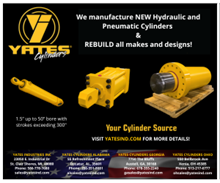Consortium Targets Breakthrough CO2 Reduction Technology
03/17/2004 -
| Return to Steel News Headlines| Print This Page |
Consortium Targets Breakthrough CO2 Reduction Technology
March 17, 2004 — A consortium has put forward to the European Commission a EUR40million integrated project to develop 'breakthrough technologies' to substantially reduce CO2 emissions in steelmaking. The consortium includes nearly all European steelmakers including Corus, Arcelor and TKS together with around 40 other industrial organizations, research institutes and universities.
If accepted by the Commission the program, known as ULCOS (Ultra-low CO2 Steelmaking), could receive up to 50% funding.
The research forms part of the 'European Steel Technology Platform' just launched in Brussels. Besides CO2 reduction, the Platform, within the EC's research framework, provides a vehicle for new process routes for products that will satisfy the constantly evolving needs of European consumers through 2030. It also embraces training and promoting the image of steel.
The Commission had challenged the steel industry to consider how carbon lean technologies could be applied to reduce CO2 emissions from an industry where the coal and coke-based blast furnace production route currently dominates, with some 60% of the 160 million tonnes a year of steel production in Europe. Through efficiency measures, the industry has already made great progress, halving CO2 emissions per tonne of steel produced by the blast furnace route over the last 50 years, and is reaching its technological limits.
In the first phase, the ULCOS project will evaluate every reasonable
proposal on CO2 emissions reduction using
a standardized methodology. This concerns carbon-based technologies with
or without subsequent sequestration, technologies that would require plentiful
energy at an economic price or hydrogen, biomass etc. The most promising
technologies should be sustainable and will then be studied in detail
and tested on a pilot scale. Finally, full-scale demonstrations of appropriate
technologies will be tested. The results of this work should redirect
investments in steelmaking in the post-Kyoto era.



.jpg?lang=en-US&ext=.jpg)
.gif?width=220&height=200&mediaprotectionhash=374c6b9a31f2b2fbfc7937391034efb46fd57feba997b9ad2ae9a0bd3d48329d&ext=.gif)

.gif?width=100&height=200&mediaprotectionhash=e2d5b15d68f84f22038524be6c58e5268d67b7f44494b544e29a8d53c5b959ba&ext=.gif)
